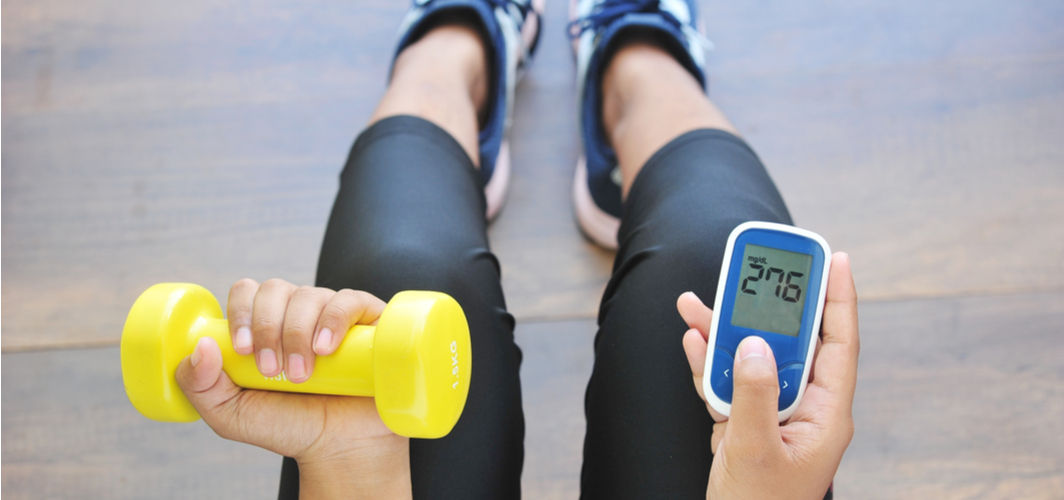General Health
Manage Diabetes With Meal Planning & Blood Glucose Monitoring
8 min read
By Apollo Pharmacy, Published on - 04 September 2023
Share this article
0
0 like

Managing blood glucose levels is crucial for individuals with diabetes, and meal planning plays a vital role in this process. By making smart food choices and monitoring blood glucose regularly, you can effectively manage your diabetes and prevent complications. In this article, we will explore the importance of meal planning and blood glucose monitoring, providing you with valuable insights and guidelines to help you make informed decisions about your diet.
How are Diabetes and Blood Glucose Levels Related?
Diabetes is a chronic condition that affects the way the body processes glucose, a type of sugar that serves as the main source of energy.
1. Types of diabetes
There are different types of diabetes, including:
- Type 1 diabetes: It is an autoimmune disease where the immune system mistakenly attacks and destroys insulin-producing cells in the pancreas.
- Type 2 diabetes: It occurs when the body becomes resistant to insulin or doesn't produce enough insulin.
- Gestational diabetes: Gestational diabetes develops during pregnancy and usually disappears after childbirth.
2. Importance of maintaining stable blood glucose levels
Blood glucose levels refer to the amount of glucose present in the bloodstream at any given time. For individuals with diabetes, it is crucial to manage blood glucose levels to prevent complications.
High blood glucose levels, known as hyperglycemia, can damage blood vessels, nerves, and organs over time. Moreover, it can lead to symptoms like:
- Increased thirst
- Frequent urination
- Fatigue
- Blurry vision
On the other hand, low blood glucose levels, called hypoglycemia, can cause symptoms such as
- Dizziness
- Sweating
- Confusion
- Loss of consciousness
Meal Planning for Diabetes Management
Meal planning helps individuals make smart food choices that can help regulate blood glucose levels.
1. Factors to consider for meal planning
When creating a diabetes-friendly meal plan, there are several factors to consider.
- Carbohydrate counting: Keeping track of the amount of carbohydrates consumed can help manage blood sugar levels effectively. This involves understanding the carbohydrate content of different foods and adjusting portion sizes accordingly.
- Glycemic index/load: The glycemic index (GI) measures how quickly a particular food raises blood sugar levels. Foods with a low GI are digested and absorbed more slowly, leading to a more gradual increase in blood glucose. Incorporating foods with a lower glycemic index can help stabilise blood sugar levels.
- Portion control: Consuming smaller, balanced meals throughout the day can prevent sharp spikes or drops in blood sugar.
2. Tips for effective meal planning for individuals with diabetes
Here are some tips for effective meal planning for individuals with diabetes:
- Importance of regular meal timings: Eating at consistent intervals helps regulate blood sugar levels and prevents spikes or drops. Plan your meals ahead of time and stick to a routine to maintain stable blood glucose levels throughout the day.
- Smart snacking options: Opt for nutrient-dense snacks like fruits, vegetables, Greek yoghurt, or nuts. These options provide essential vitamins and minerals while keeping your blood sugar levels in check.
Essential Nutrients for Diabetes Management
Proper nutrition in diabetes plays a significant role in controlling blood glucose levels and maintaining overall health.
1. Carbohydrates
Choose complex carbohydrates such as whole grains, legumes, and vegetables over refined carbohydrates like white bread and sugary snacks. Include:
- Whole wheat bread
- Brown rice
- Quinoa
- Oats
Aim for 45-60 grams of carbohydrates per meal, but this may vary depending on individual needs.
2. Protein
Protein helps with muscle repair and growth, aids in satiety, and stabilises blood sugar levels. Opt for lean sources like:
- Chicken
- Fish
- Tofu
- Pulses
- Low-fat dairy products
Consume about 15-20 grams of protein per meal.
3. Fats
Limit saturated fats and opt for healthier fats instead. Incorporate sources like:
- Avocados
- Nuts
- Seeds
- Olive oil
- Fatty fish
The Plate Method for Diabetes Management
One effective method of portion control is using the plate method. This approach involves dividing your plate into different sections to ensure a balanced meal.
Here are some suggestions for building a diabetic-friendly plate:
- Fill half of your plate with non-starchy vegetables like leafy greens, broccoli, or peppers. These vegetables are low in carbohydrates and high in fibre, which helps regulate blood sugar levels.
- Reserve a quarter of your plate for lean protein sources such as chicken, fish, or legumes. Protein helps keep you full and slow down the digestion of carbohydrates.
- The remaining quarter of your plate can be allocated for whole grains or starchy vegetables like brown rice, sweet potatoes, or whole-wheat bread. These carbohydrates provide energy but should be consumed in moderation.
Meal Ideas and Recipes for Individuals with Diabetes
1. Breakfast options
- Start your day with a balanced meal that includes a good source of protein, healthy fats, and complex carbohydrates.
- Opt for high-fibre cereals or whole-grain bread to keep you feeling full and satisfied.
- Include protein-rich foods like eggs, cottage cheese, or Greek yoghurt.
- Try a veggie omelette with whole wheat toast, or oatmeal topped with berries and a sprinkle of nuts for a nutritious breakfast.
2. Lunch options
- Aim for a well-rounded lunch that combines lean protein, whole grains, and plenty of vegetables.
- Consider options like grilled chicken or fish with brown rice and steamed veggies.
- Experiment with salads by adding protein sources like beans, tofu, or grilled chicken.
3. Dinner options and recipes
- Enjoy a satisfying and balanced dinner by including lean protein, healthy fats, and non-starchy vegetables.
- Grilled salmon or chicken breast with roasted vegetables and quinoa is a great option.
- Vegetable curry made with chickpeas or lentils served with whole wheat roti is another delicious choice.
Blood Glucose Monitoring Techniques and Tips
Monitoring your blood glucose levels is crucial for managing diabetes effectively. It allows you to make informed decisions about your diet, medication, and overall lifestyle.
1. Different methods of monitoring blood glucose levels
- Fingerstick Testing: It is the most commonly used method and can be done at home or on the go. It requires a small drop of blood from a finger using a lancet. Results are obtained instantly.
- Continuous Glucose Monitoring (CGM): This newer technology provides real-time readings every few minutes. It involves wearing a sensor under the skin. CGM alerts you to high or low blood sugar levels and offers valuable data trends and patterns.
2. Frequency and timing of blood glucose testing
The frequency and timing of blood glucose testing depend on several factors. Here are some guidelines:
- Type 1 Diabetes: For Type 1 diabetes, test before meals and snacks as well as before and after physical activity. Monitor more frequently during illness or stress
- Type 2 Diabetes: Test as recommended by your healthcare provider. Typically, Type 2 diabetes testing is done before meals, after fasting, or at bedtime. Adjust based on medication changes or lifestyle modifications.
Lifestyle Modifications for Optimal Diabetes Management
To effectively manage diabetes, it is important to make lifestyle modifications that support optimal blood glucose control.
1. Regular physical activity recommendations
Regular physical activity is essential for individuals with diabetes as it helps improve insulin sensitivity and supports weight management.
If you're not used to regular physical activity, begin with shorter sessions and gradually increase the duration and intensity. Aim for at least 30 minutes of exercise most days of the week.
2. Importance of stress management and adequate sleep
Stress management and adequate sleep are also crucial components of diabetes management. High levels of stress can lead to elevated blood glucose levels, so finding healthy ways to cope with stress such as:
- Mindfulness techniques
- Yoga
- Engaging in hobbies
Additionally, getting enough quality sleep plays a role in regulating blood sugar levels, so aiming for 7-9 hours of sleep per night is important.
3. Limiting alcohol consumption and quitting smoking
Limiting alcohol consumption is advised as alcohol can cause fluctuations in blood sugar levels and may interfere with medication. It is recommended that men limit their alcohol intake to no more than two drinks per day and women limit their intake to one drink per day.
- Men are recommended to limit their alcohol intake to no more than two drinks per day.
- Women are recommended to limit their intake to one drink per day.
Quitting smoking is essential for individuals with diabetes as smoking increases the risk of developing complications such as heart disease and neuropathy.
Conclusion
By making smart food choices and monitoring blood glucose levels regularly, one can maintain stable blood sugar levels and prevent complications associated with diabetes. It is important to remember that everyone's diabetes management needs are unique. It is always recommended to consult with a healthcare professional for personalised guidance and support. With the right approach to meal planning and blood glucose monitoring, individuals with diabetes can lead a healthy and fulfilling life.
FAQs
Q. How often should I check my blood glucose levels?
The frequency of blood glucose monitoring varies depending on individual circumstances. However, it is generally recommended to check your levels before meals, two hours after meals, before and after exercise, and at bedtime.
Q. What is the target range for blood glucose levels?
The target range for blood glucose levels may vary depending on factors such as age and overall health.
Q. What should I do if my blood glucose levels are outside the target range?
If your blood glucose levels are consistently outside the target range, it is important to consult with your healthcare provider. They may suggest adjustments to your medication, diet, or lifestyle to help bring your levels back into range.
Q. What factors can affect blood glucose levels?
Several factors can influence blood glucose levels, including food choices, physical activity, stress, medication, illness, and hormonal changes. It's important to be aware of these factors and make necessary adjustments to maintain optimal blood sugar control.
Q. Are there any new technologies available for blood glucose monitoring?
Yes, there are several new technologies available for blood glucose monitoring. Continuous glucose monitoring (CGM) systems provide real-time data about your glucose levels throughout the day. Some CGM systems integrate with insulin pumps and offer additional features like predictive alerts for high or low glucose levels.
General Health
Consult Top Diabetologists
View AllLeave Comment
Recommended for you
.jpg?tr=q-80)
General Health
Creatine Kinase MB Test: Purpose, Procedure, Range, and Results
Creatine Kinase MB Test helps assess heart damage & muscle health. Learn about its purpose, procedure, normal range, and how to interpret CK-MB results.

General Health
Hypothyroidism Diet: Foods To Eat And Avoid
This article discusses the vegetables that people with hypothyroidism should be careful about, such as cruciferous vegetables, spinach, sweet potatoes, radishes, and soy. It also provides tips on how to prepare these vegetables to minimise their effects on thyroid hormone production.

General Health
Shingles Diet: Essential Foods To Eat And Avoid
foods to avoid with shingles, foods to eat with shingles, shingles diet
Subscribe
Sign up for our free Health Library Daily Newsletter
Get doctor-approved health tips, news, and more.
Visual Stories

The Best Exercises for Controlling Blood Sugar Levels
Tap to continue exploring
Recommended for you
.jpg?tr=q-80)
General Health
Creatine Kinase MB Test: Purpose, Procedure, Range, and Results
Creatine Kinase MB Test helps assess heart damage & muscle health. Learn about its purpose, procedure, normal range, and how to interpret CK-MB results.

General Health
Hypothyroidism Diet: Foods To Eat And Avoid
This article discusses the vegetables that people with hypothyroidism should be careful about, such as cruciferous vegetables, spinach, sweet potatoes, radishes, and soy. It also provides tips on how to prepare these vegetables to minimise their effects on thyroid hormone production.

General Health
Shingles Diet: Essential Foods To Eat And Avoid
foods to avoid with shingles, foods to eat with shingles, shingles diet



